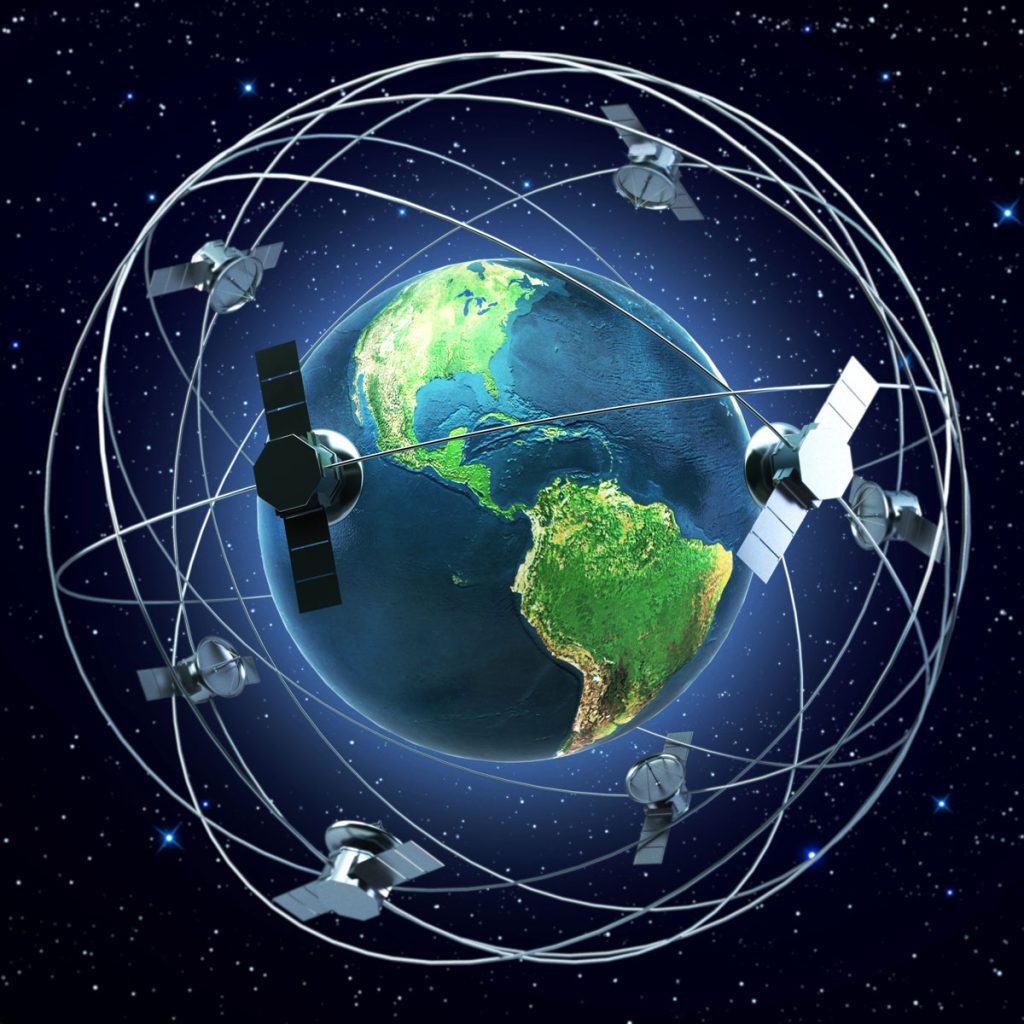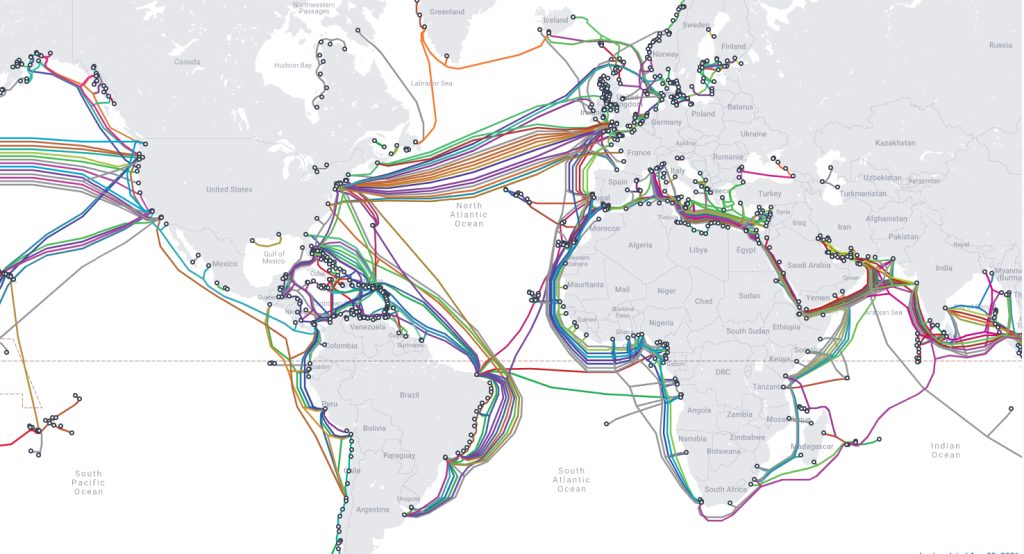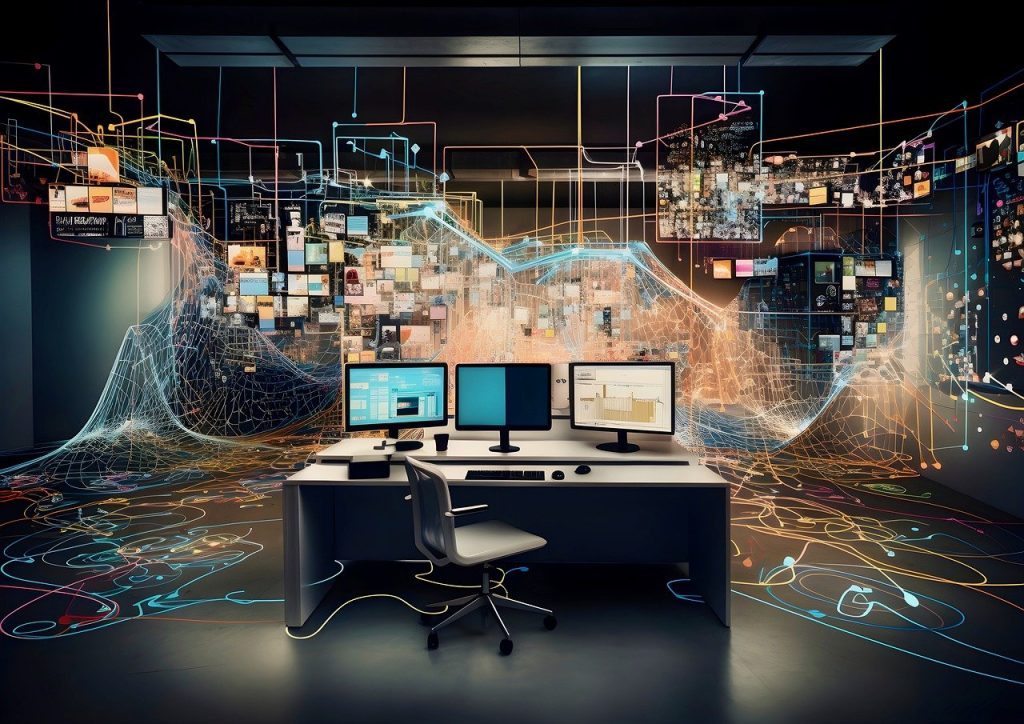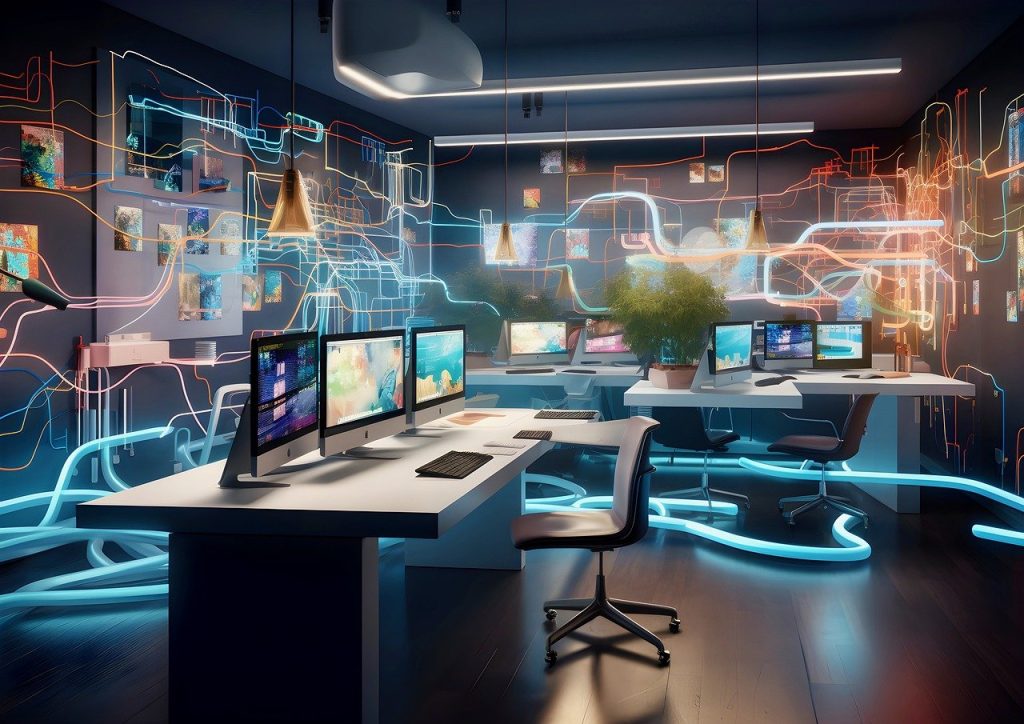A little bit of context :
We all know the internet as an intangible entity, a digitized world on its own. However, the internet has a physical reality. In this three posts series, we will explore three representations of the internet. We will question them and challenge those representations with the reality of the internet to see how accurate they are.
1 – Satellites around the earth : a fraud worth investigating !

We all know this image of satellites, orbiting around us, transmitting data and ultimately being internet :
This image is a fraud. A false imagery of what the internet looks like. Indeed, satellites only make up for 1% of the internet. The reason is satellites are more expensive yet slower than other technologies. However, they are perceived as a technological achievement, as the embodiment of humains mastering space. Also they are falsely perceived as the best internet solution because of their use in tense or complicated situations. For instance, militaries use internet satellites in Ukraine. And once again strikes the survivorship bias. It is a bias that leads us to concentrate on entities that passed a selection process while overlooking those that did not. In this case, we are led to believe that satellites provide the best internet because they are used by those who need it the most. In fact, it’s quite the opposite : they use satellite technology because it is the less advanced technology and therefore present in remote locations and conflict zones.

But what would be the right representation ? Right question. Almost as if I wrote it myself. To answer, we first need to understand how the internet actually works. 99% of the internet goes through underwater cables. Actually the first cable was set in 1851 between the UK and France. In 1865 the first cable from France to the USA was in place. At that time those cables were for telegram which was the first transmission system on that scale. But as the internet grows the technology evolves and in 1988 the first fiber cable is installed. That technology is still the one on which the internet works now. This technology has many advantages compared to satellites which is funny considering it’s not that younger (the first satellite launch was in 1957). 1
The first advantage is one we can experiment. The gamers call it ping but for those who are not initiated we can call it latency or delay. Indeed, it takes time to get information through waves to the satellites and back. On the other hand, fiber works with a light beam reflected in a glass cable and is therefore as fast as light can be. Of course it is not that fast for us since we also need the time to encode and decode the information but still faster than satellites.
The second but not less important advantage is the ease to work on a cable compared to a satellite. Which leads to the last advantage : it is so much less expansive. Nowadays, the internet runs on 420 cables 1,3 millions of kilometers long. That is 32 and a half times the circumference of the earth. Although these cables are mostly government run, some are owned by private companies since 2010. Thereby, Google and Facebook own or co-own 20 to 30 underwater cables. Therefore this would be a more accurate representation of the internet.

One could argue this is a very factual representation and I would agree. So I present to you AI generated representations that could suit reality and be more… digest.



Of course, this lack of accuracy in representations of how the internet actually works raises questions about understanding the tool we daily use but also the cultural representation of the internet. For instance, those movies where the bad guy hack a satellite to access the TV broadcast or disable connected devices are nothing close to accurate. Indeed, hacking into the underwater cable or even cutting it is way more effective. In 2022, Shetland Islands (UK) were simply cut from the outside world by the failure of one of the cables. It was an accident but cable facilities are highly sensitive and militarised. Last year, we all heard about the russian gas pipeline that “broke” but less people have heard about the cable nearby which was one of the top concerns among governments in Europe.2
I will conclude this post on a question I don’t have the answer to : why do you think this false representation exists both in people’s minds and in movies ?
- More to understand underwater cable technology and its history on wikipedia ↩︎
- An interesting youtube video on the political aspect of the subject ↩︎


Wow, interesting post! Before this, I did have this huge misconception that satellites were like the backbone of the internet. And why do we hang on to these misconceptions? Maybe because such false representation is more visually compelling and easier to understand. Satellites orbiting the Earth look much cooler on screen than a bunch of undersea cables. It’s just more exciting to see someone messing with a satellite than chopping a cable under the ocean. So, filmmakers go with the more dramatic option. And then, once the misconception takes root, it can be remarkably persistent.When someone uses a particular representation of the internet in media for the first time, others might adopt it without questioning. Over time, these misconceptions become an informal norm, and everyone just rolls with it because it’s what’s widely understood, even if it’s incorrect, cuz we find comfort in the familiar. So, thanks for opening up this Pandora’s box of internet myths! While these misconceptions persist, this post is a great reminder that we need to dig deeper and question what we think we know about the digital world. Looking forward to your next part of this series!